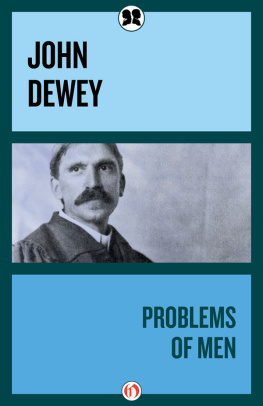Copyright 2008 by Vicki Myron
All rights reserved. Except as permitted under the U.S. Copyright Act of 1976, no part of this publication may be reproduced, distributed, or transmitted in any form or by any means, or stored in a database or retrieval system, without the prior written permission of publisher.
Grand Central Publishing
Hachette Book Group
237 Park Avenue
New York, NY 10017
Visit our Web site at www.HachetteBookGroup.com.
Grateful acknowledgment is given to W. P. Kinsella for permission to quote in Chapter 14 from Shoeless Joe by W. P. Kinsella (Boston: Houghton Mifflin, 1982).
First eBook Edition: September 2008
Grand Central Publishing is a division of Hachette Book Group, Inc.
The Grand Central Publishing name and logo is a trademark of Hachette Book Group, Inc.
ISBN: 978-0-446-54220-3
Front jacket photo of Dewey by Rick Krebsbach
Contents
Introduction
Chapter 1: The Coldest Morning
Chapter 2: A Perfect Addition
Chapter 3: Dewey Readmore Books
Chapter 4: A Day in the Library
Chapter 5: Catnip and Rubber Bands
Chapter 6: Moneta
Chapter 7: Grand Avenue
Chapter 8: A Cats Best Friends
Chapter 9: Dewey and Jodi
Chapter 10: A Long Way from Home
Chapter 11: Hide-and-Seek
Chapter 12: Christmas
Chapter 13: A Great Library
Chapter 14: Deweys Great Escape
Chapter 15: Spencers Favorite Cat
Chapter 16: Iowas Famous Library Cat
Chapter 17: Dewey in the Modern World
Chapter 18: Puss in Books
Chapter 19: The Worlds Worst Eater
Chapter 20: Deweys New Friends
Chapter 21: What Makes Us Special?
Chapter 22: Dewey Goes to Japan
Chapter 23: Memories of Mom
Chapter 24: Deweys Diet
Chapter 25: The Meeting
Chapter 26: Deweys Love
Chapter 27: Loving Dewey
Epilogue: Last Thoughts from Iowa
Acknowledgments
To Gran, Mom, and Jodi three amazing women who loved
Dewey almost as much as I do
Introduction
Welcome to Iowa
There is a thousand-mile table of land in the middle of the United States, between the Mississippi River on the east and the deserts on the west. Out here, there are rolling hills, but no mountains. There are rivers and creeks, but few large lakes. The wind has worn down the rock outcroppings, turning them first to dust, then dirt, then soil, and finally to fine black farmland. Out here, the roads are straight, stretching to the horizon in long, unbroken lines. There are no corners, only occasional, almost imperceptible bends. This land was surveyed and plotted for farms; the bends are corrections in the survey line. Exactly every mile, every road is intersected by another almost perfectly straight road. Inside is a square mile of farmland. Take a million of those square miles, lace them together, and you have one of the most important agricultural regions in the world. The Great Plains. The Bread Basket. The Heartland. Or, as many people think of it, the place you fly over on your way to somewhere else. Let them have the oceans and mountains, their beaches and their ski resorts. Ill take Iowa.
In northwest Iowa, in winter, the sky swallows the farmhouses. On a cold day, the dark clouds that blow in across the plains seem to churn the land under like a plow. In the spring, the world is flat and empty, full of brown dirt and hacked-off cornstalks waiting to be plowed under, the sky and land perfectly balanced like a plate on a stick. But if you come in the late summer, you would swear the ground is about to push up and tip the sky right out of the picture. The corn is nine feet high, bright green leaves topped with brilliant gold tassels. Most of the time you are buried in it, lost in the walls of corn, but top a small rise in the road, just a few feet of elevation, and you can see endless fields of gold atop green, silken threads sparkling in the sun. Those silks are the sex organs of the corn, trapping pollen, flying golden yellow for a month and then slowly drying up and browning out under the stiff summer heat.
Thats what I love about northwest Iowa: it is always changing. Not in the way the suburbs change as one chain restaurant replaces another or the way cities change as buildings crowd each other ever higher, but in the way the country changes, slowly back and forth in a gentle motion that is always sliding forward, but never very fast. There arent many roadside businesses out here. No crafts stores. No farmers markets. The farmhouses, which are fewer every year, hug the road. The towns pop up suddenly, bearing signs announcing THE JEWELIN THE CROWNOF IOWA or THE GOLD BUCKLEON THE CORN BELT, and disappear just as quickly. Two minutes, and theyre gone. A grain elevator or a processing plant, maybe a downtown strip with a convenience store, a place to eat. Every ten miles or so, theres a roadside cemetery, small plain markers behind low stone walls. These are pioneer plots that grew into extended family plots and eventually into town cemeteries. Nobody wants to be buried far from home, and nobody wants to waste much land. Use what you have. Make it simple. Keep it local.
Then, just when youre sliding away, when youre drifting into complacency like a corn row down the back side of a rise, the road widens and you pass a strip of stores: Matt Furniture, the Iron Horse Hotel, the Prime Rib restaurant, but also a Wal-Mart, a McDonalds, a Motel 6. Turn north at the stoplight, the first turn in fifty miles no matter which direction youve been driving, not to mention the first stoplight, and within a minute youve left the chains behind and youre driving the beautiful low bridge over the Little Sioux River right into the heart of Spencer, Iowa, a town that hasnt changed much since 1931.
Downtown Spencer is picture postcard small-town America: rows of storefronts in connecting two-and-three-story buildings where people pull their cars to the curb, get out, and walk. White Drug, Eddie Quinns Mens Clothing, and Steffen Furniture have been in business for decades. The Hen House sells decorating items to farmwives and the occasional tourist on her way to the Iowa lake country twenty miles north. Theres a hobby shop specializing in model airplanes, a card shop, and a store that rents oxygen tanks and wheelchairs. The Vacuum Cleaner Store. Arts on Grand. The old movie theater is still in business, although it shows only second-run movies since a seven-screen cineplex opened south of the bridge.
The downtown ends at The Hotel, eight blocks from the bridge. The Hotel. Thats the actual name. It was known as the Tagney in the late 1920s when it was the areas best accommodation, bus depot, train station, and only sit-down restaurant. By the end of the Great Depression, it had become a flophouse and, according to legend, the town bordello. The five-story building, plain redbrick and built to last, was eventually abandoned, then rehabilitated in the 1970s, but by then the real action had moved five blocks down Grand Avenue to Sisters Main Street Caf, a no-frills diner with Formica tables, drip coffee, and smoky booths. Three groups of men congregate every morning at Sisters: the old guys, the older guys, and the really old guys. Together, they have run Spencer for the past sixty years.
Around the corner from Sisters Caf, across a small parking lot and just half a block off Grand Avenue, is a low gray concrete building: the Spencer Public Library. My name is Vicki Myron, and Ive been working in that library for twenty-five years, the last twenty as director. Ive overseen the arrival of the first computer and the addition of the reading room. Ive watched children grow up and leave, only to walk back through the doors ten years later with their own children. The Spencer Public Library may not look like much, at least not at first, but it is the centerpiece, the middle ground, the heart of this heartland story. Everything Im going to tell you about Spencerand about the surrounding farms, the nearby lakes, the Catholic church in Hartley, the Moneta School, the box factory, and the wonderful old white Ferris wheel up at Arnolds Parkall flows back eventually to this small gray building and to the cat who lived here for more than nineteen years.
Next page








